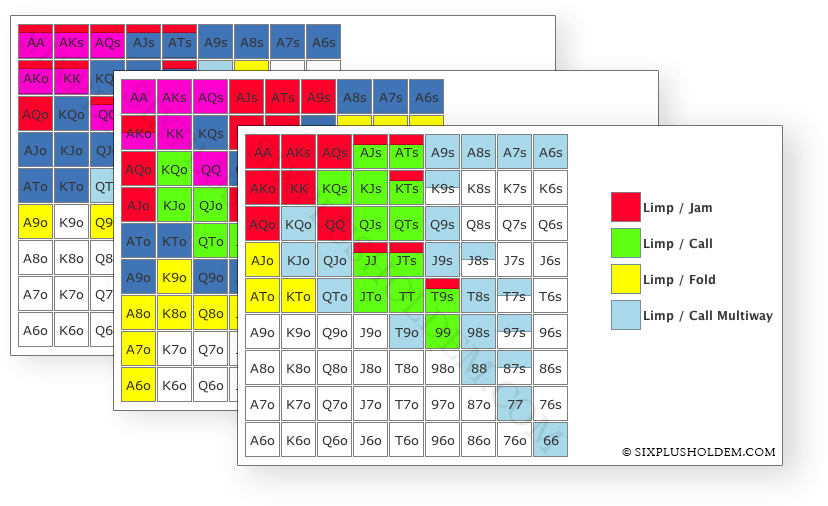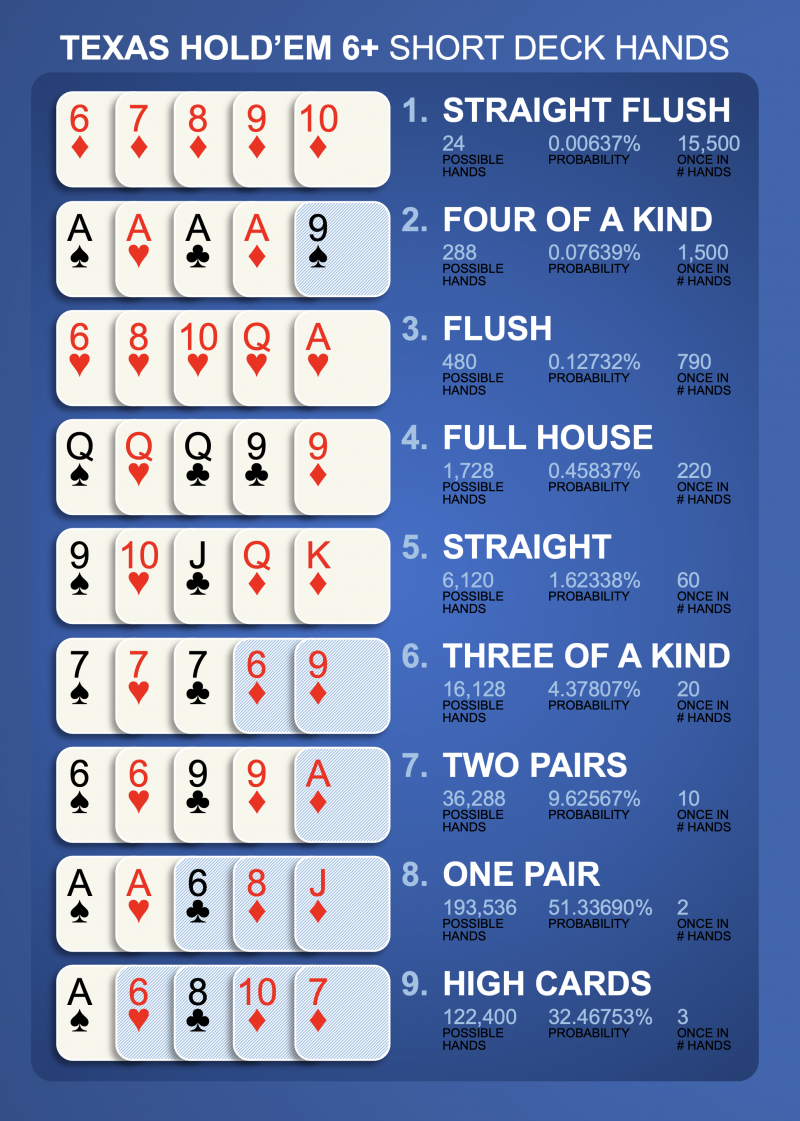Short Deck Hands
- Short Deck Hands
- Short Deck Winning Hands
- Short Deck Best Starting Hands
- Short Deck Top Hands
- Short Deck Hands
- Short Deck Best Hands

What is “short-deck” poker? This is just one of the things Paul Phua discusses with Phil Ivey in the latest Paul Phua Poker School video, along with strategy tips for beginners
Do beginners have an easier time at poker these days? In the latest Paul Phua Poker School video, we welcome back the great Phil Ivey. Last time we talked about the thrills and challenges poker holds, even for a player as experienced as Phil. This time we focus on beginners to the game, as well as a fun variant on Texas Hold ’Em called “short-deck poker” or “Six Plus Hold ’Em”.
Short Deck Hold’em Rules and Hand Rankings Many of the rules in Short Deck Hold’em are exactly the same as a No Limit Hold’em game: Each player receives two hole cards. There are three rounds of community cards (the flop, turn, and river) with a round of betting after each. Hands played out of position that are not profitable, suddenly become winners when played in position. As a result, our entire opening range should be geared toward playing more hands in position than our opponents and fewer hands out of position. Therefore, as we get closer to the button our opening frequency should steadily increase. Short deck NL hold’em - also known as 6-plus hold’em - is currently enjoying another ramp up in popularity. Three or four years ago, it appeared in the public eye for the first time when the likes of Phil Ivey and Tom Dwan were reportedly playing it in nosebleed live cash games around Asia against rich businessmen. In Six Plus Hold’em, also known as “Short Deck”, the amount of cards in the game is reduced and the hand ranking adjusted. The cards 2 to 5 are removed making it a 36-card deck, that leads to a whole new dynamic with more action guaranteed.
Poker can be a hard game to break into : experienced players may punish you if they sense weakness, and though it is easy to learn the basic rules, it can take a while to understand all the odds and strategies. But as Phil Ivey says in this video interview, “Because of all the information that’s available, with the different teaching schools and things that are available now, different ways of learning that are out there, and with Paul’s teaching site, I think everyone is catching up.”
: experienced players may punish you if they sense weakness, and though it is easy to learn the basic rules, it can take a while to understand all the odds and strategies. But as Phil Ivey says in this video interview, “Because of all the information that’s available, with the different teaching schools and things that are available now, different ways of learning that are out there, and with Paul’s teaching site, I think everyone is catching up.”When Phil Ivey started out in poker, winning his first WSOP bracelet when he was just 23, internet poker was in its infancy. There were a few strategy books, such as Doyle Brunson’s Super System, but not the virtual library of tips that is out there now.
 “I didn’t have schools,” says Phil Ivey in the video interview. “I didn’t have teaching sites. I didn’t have different tools I could learn from.” His most important lessons, he says, came just from trial and error.
“I didn’t have schools,” says Phil Ivey in the video interview. “I didn’t have teaching sites. I didn’t have different tools I could learn from.” His most important lessons, he says, came just from trial and error.A big tip for beginners
So one big tip for beginners is to learn everything they can from sites like Paul Phua Poker! And always be aware that however much you think you know, there is always more to learn. As Phil Ivey points out in our video interview, “beginners have a certain selection of hands in their minds that they want to play, and they just stick with that”.
Instead, he encourages players to experiment: “Start learning which hands you can play, in which positions, which hands you can bluff with, which hands you should call with.”
And as I say in the video, your play should also vary according to the structure of the games – whether there are antes or straddles involved, for instance – as well as whether the other players are aggressive or tight.
If it sounds complicated, that’s because it is! Phil Ivey has devoted two decades to perfecting his game. I know Phil pretty well, as we have played together many, many times. And, as I also say in the video, I think one of the most impressive things about him is not just his grasp of strategy, but his strength of character. He just never seems to go on tilt, and that’s something I try to model myself on.
“Short-deck” or “Six-Plus Hold ’Em”
There are more useful tips in the video, so do watch it. But one thing I perhaps need to explain more is the “short deck game” that we talk about in the interview. We often like to play this game when we get together. It is very similar to Texas Hold ’Em, but with fewer cards.
Before you start you remove from the deck all the low cards, deuce through to 5, which is why the game is also known as “Six Plus Hold ’Em”. It’s a more exciting game than Texas Hold ’Em in many ways, because with the low cards taken out you are more often dealt high cards and big pairs. You also have to adapt to a different set of odds. Post-flop, you have a nearly 1 in 2 chance of completing an open-ended straight draw by the river, for instance, compared with nearly 1 in 3 in classic Texas Hold ’Em.
As Phil Ivey says in the video interview, “There’s a lot of gambling involved. The equities run pretty close, so it’s pretty easy to get your money in the middle and be 50/50 or somewhere near that. It suits a more gambling style of player.”
Phil thinks this makes the short-deck game perfect for the beginner. But if so, I have just one piece of advice. You still don’t want to be playing against Phil Ivey!
For more Paul Phua Poker School videos, subscribe to the YouTube channel. It’s free!
Short deck NL hold’em - also known as 6-plus hold’em - is currently enjoying another ramp up in popularity. Three or four years ago, it appeared in the public eye for the first time when the likes of Phil Ivey and Tom Dwan were reportedly playing it in nosebleed live cash games around Asia against rich businessmen.
Many players have said it’s almost a hybrid of NL and PLO because of how close the equities tend to run together. A consequence of this is that all in clashes pre-flop are much more common. Perhaps more suitable for somebody looking for mobile no deposit free spins than a seasoned poker player.
This is all because the deuces through fives are removed from the deck, leaving only 36 cards. We might be forgiven for thinking little would change, but in fact, the hand rankings are quite different. A flush now beats a full house, and three of a kind sits in front of a straight!
Why Short Deck Is an Action Game
With the hand rankings changing around slightly, we can also see that the chances of making your draw are different too.
Obviously you still have eight outs to complete a straight draw, but instead of digging through 47 cards to hit jackpot, there are now only 31 to contend with. Now we will hit our straight more than 45% of the time.
Already we have seen that a flush is rarer than a full house, but we will still complete the draw more than 30% of the time, in comparison to 36% in normal NL hold’em.
Another Rule Change
Savvy players of standard NL hold’em will be familiar with what is known as “the rule of two and four”. In short deck games we must switch to “the rule of three and six”.
To clarify for newer players, what we mean is on the flop we can multiply our outs by six and the result is our equity, or on the turn we multiply our outs by three to know our equity.
Don’t Be Deceived By So Many Strong Hands
With only 630 starting hands possible compared to the usual 1326, we can expect to see powerhouse starting hands much more frequently. For example, pocket aces will arrive in front of you every around once every 100 hands, instead of every 221 using a full deck. Ace-king is also seen twice as often.
The problem here is that it actually becomes quite deceiving in terms of absolute strength versus relative strength. This can be illustrated by thinking about how well we view two broadway cards in normal hold’em - it’s a fairly decent hand right? Playing short deck rules we will be dealt such a hand close to one third of the time!
An Illustrative Hand
This hand illustrates the wildly different pre flop equities we witness when playing short deck hold’em. It comes from the recent Triton Poker Series in Jeju, South Korea, during a Short Deck Ante Only tournament.
The antes are 3,000 each hand,except the button who pays 6,000.
UTG limps with pocket aces and the HJ raises it up to 25,000 with AcQd. The CO calls with Js9s and while the BTN considers his move we get to see what the equities are.
UTG - AA - 30%
HJ - AQo - 12%
CO - J9s - 32%
BTN - 22%
Short Deck Hands
So J9s is actually a favourite over pocket rockets in a four-way pot. Usually, the results wouldn’t look like this. Here is what we would usually see.

Short Deck Winning Hands
UTG - AA - 55%
HJ - AQo - 5%
CO - J9s - 19%
BTN - 21%
Short Deck Best Starting Hands
In the end, the BTN0 folds preflop and UTG then completes his original plan by jamming all-in. This how the match ups look now.
UTG - AA - 49% - 263,000
HJ - AQo - 12% - 71,000
CO - J9s - 34% - 54,000
Short Deck Top Hands
Why Should We Play Short Deck Rules?
For a start, action games always attract players who are prepared to gamble it up. This is not only good for your overall enjoyment, but it increases potential profit too. It’s also good to get involved with new games while everyone is still finding their feet. The best players at each stake level will not have had much time to increase their edge over everyone else. There’s also not much information out there yet, making it a much closer contest.
Short Deck Hands
Stars such as Phil Ivey heartily endorse the game. He told the media:
Short Deck Best Hands
I started playing Short Deck recently, it has quickly become one of my favorite games. I enjoy playing it. It's fun, it's something different, it's new and there's a lot of gambling involved. The equities run pretty close, so it's pretty easy to get your money in the middle and be 50/50 or somewhere near that. It suits a more gambling style of player.'